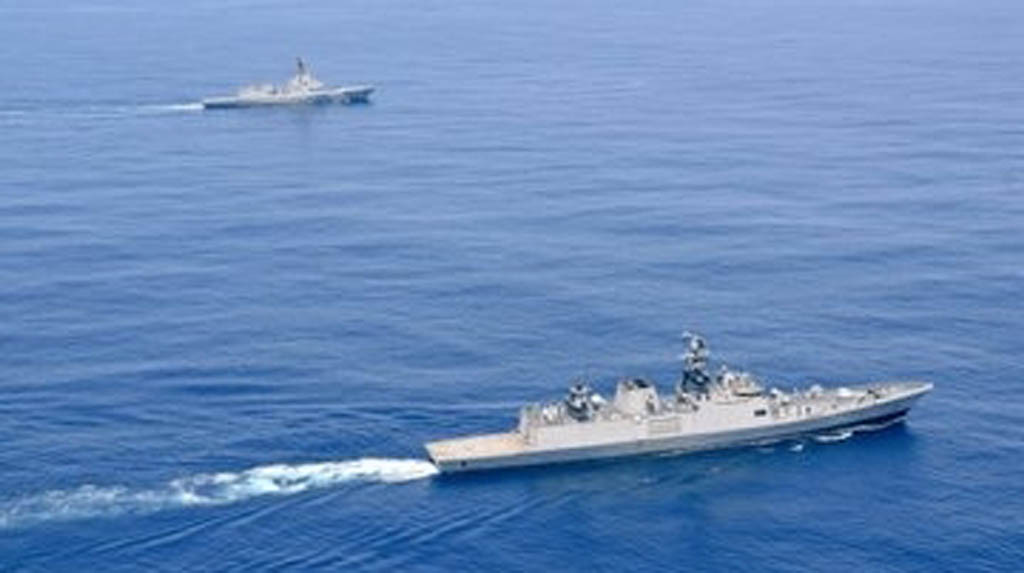New Delhi: After being invited by India to participate in the Malabar military exercises, Australia has gone on an overdrive to exchange notes with fellow partners including Japan to counter Chinas heft in the Indo-Pacific.
Australian defence minister Linda Reynolds has concluded detailed talks with her Japanese counterpart Nobuo Kishi, focusing on the nuts-and-bolts of working together in response to China’s assertion in the East and South China seas, as well as some of the island territories of the Pacific.
Earlier this week the two defence ministers decided to upscale joint military activities in the Indo-Pacific, including the South China Sea.
They also agreed to focus on testing mid-air refueling. On the development of advanced weapons, Canberra and Tokyo earmarked hydro-acoustics and autonomous ground vehicles as possible areas of joint research apart from promoting tie-ups among the two military industries. The two ministers met soon after foreign ministers of the Indo-Pacific Quad comprising India, Australia, Japan and the United States landed in Tokyo to brainstorm concrete ideas to secure the vast region’s shipping sea lanes, based on well-defined and universally accepted international rules.
All four countries have previously signed with each other military logistics agreements – the bedrock of their joint operations in the future. Aware of the collective firepower of the Quad, the Chinese have already flagged their objections to the Tokyo rendezvous. In its statement, soon after the October 6 conclave, the Chinese embassy in Japan warned the quarter not to form “exclusive cliques” that threaten the interests of third parties. It also specifically aimed at US secretary of the state Mike Pompeo, implying that the Quad was divided on the question of China.
“Pompeo has repeatedly fabricated lies about China and maliciously created political confrontation. We once again urge the US to abandon its Cold War mentality and ideological prejudice, stop unprovoked accusations and attacks against China and treat relations with China in a constructive manner,” the embassy said.
The upcoming Malabar naval exercise will now test the capacity of the Quad navies to work together with each other to perform complex military tasks and allow them to gauge the limits of interoperability.
India is fast emerging as the rising star in the Quad constellation. Australia’s foreign minister Marise Payne has already announced that the Malabar exercise would build on Canberra’s deepening relationship with India, underpinned by the Comprehensive Strategic Partnership, to which Prime Minister Scott Morrison and Indian Prime Minister Narendra Modi agreed on June 4. As India, which stands on the frontline and is facing a stiff standoff with China in Ladakh, prepares for hosting the Malabar maneuvers, Japan has made it clear that it is seeking allies beyond the Quad-core to ensure that Beijing does not dominate the waters of the region.
Japanese Prime Minister Yoshihide Suga has been touring Vietnam and Indonesia this week to woo the 10-nation Asian to pivot more sharply, not in the competitive direction of China, but towards Japan and the democracies of the Indo-Pacific region. “Suga has chosen Vietnam and Indonesia as the destinations for his first trip abroad to set his foreign policy priorities,” wrote the daily Nikkei Asia. It pointed out, quoting a foreign ministry official, that Japan hopes to send a strong message that “the central theme of Suga diplomacy is an alliance with Asean to counter China’s rise”.
Separately, the US has also amplified its Indo-Pacific military deployments on China’s doorstep. Last week Ronald Reagan Carrier Strike Group (CSG-5) re-entered the waters of the South China Sea for the third time during its 2020 deployment.
“The focus of our operations has always been and will continue to be, co-operation alongside our Indo-Pacific allies and partners in promoting regional stability,” Rear Adm. George Wikoff, commander, Ronald Reagan Carrier Strike Group was quoted as saying. The U.S. Navy also asserted that the Ronald Reagan Carrier Strike Group is forward-deployed to support a free and open Indo-Pacific region. Besides, the US has also been proactive in deterring China from launching any attack on Taiwan, another flashpoint in the Indo-Pacific region. The US House of Representatives on Tuesday proposed a bill that requires the US military to maintain an adequate level of deterrence to prevent China from invading Taiwan. It also supports Taiwan’s participation in international organizations, the website Taiwan News reported. The bill, titled the China Task Force Act, or CTF Act, could be passed before the current session of Congress expires on January 3, US lawmakers said. The Taiwan Symbols of Sovereignty Act, which is part of the omnibus CTF Act instructs the secretary of defence to allow Taiwan’s flag to be displayed at US government agencies and on the uniforms of Taiwanese representatives performing official duties in the country.
There is also a provision in the bill that calls upon the US Department of the Treasury to improve Taiwan’s standing in international financial institutions, such as the International Monetary Fund. The draft law follows an intense on-going debate in the US to recognize Taiwan as an independent country-a move that would centrally challenge the One-China principle that Beijing upholds as sacrosanct.




